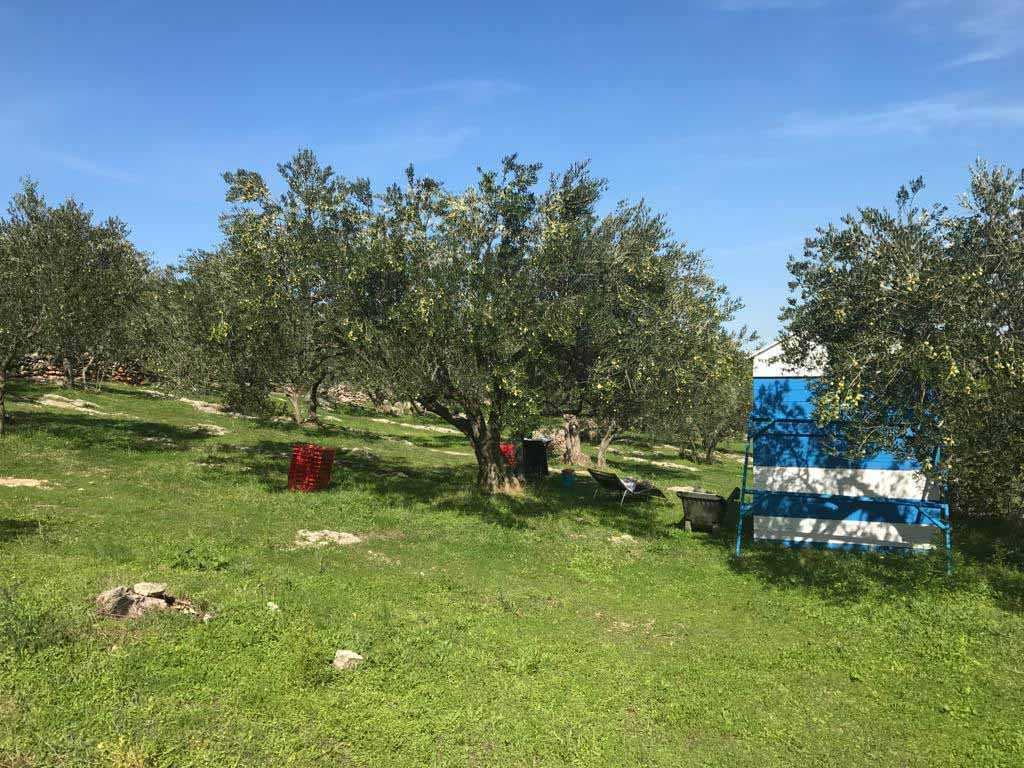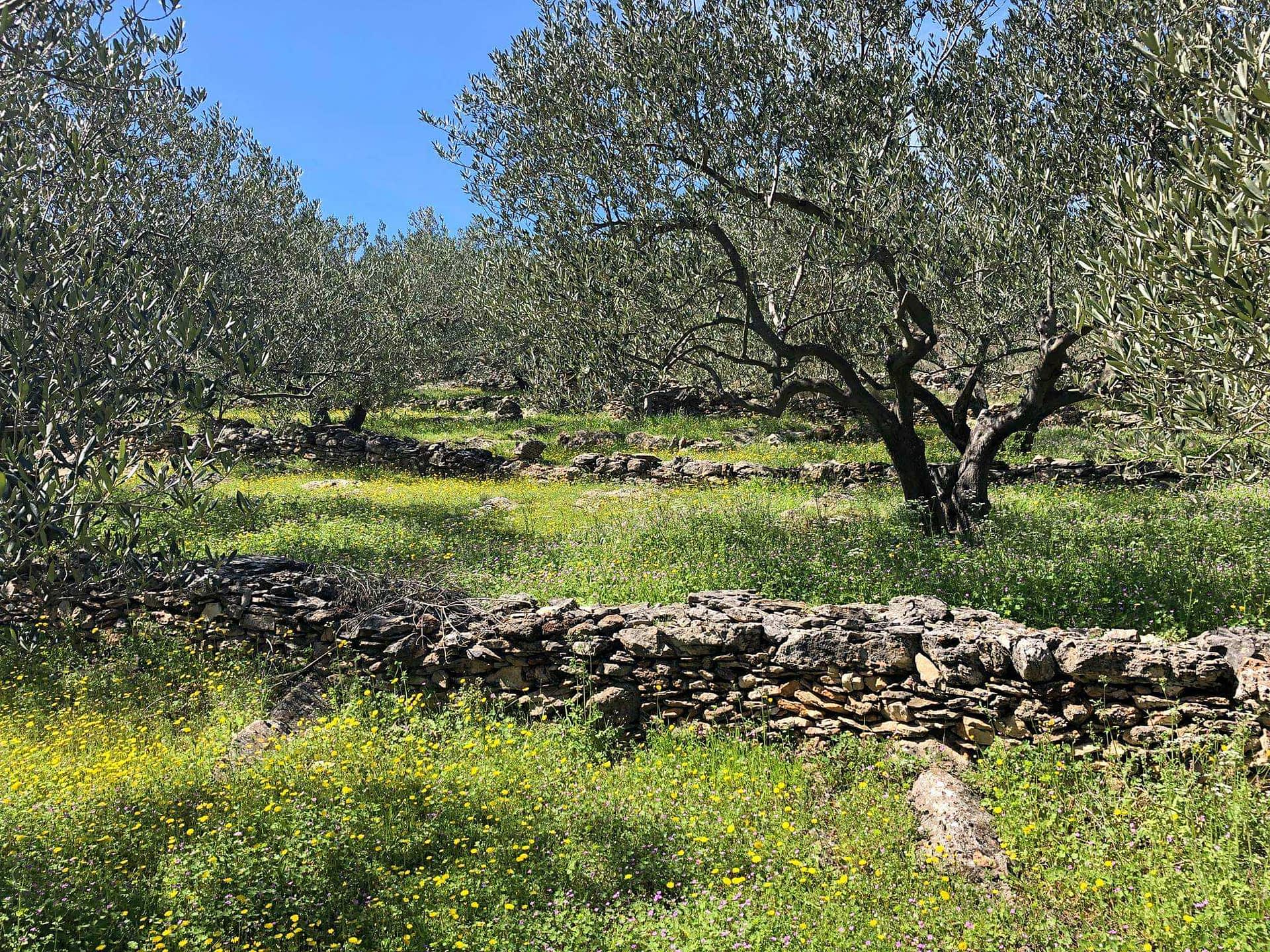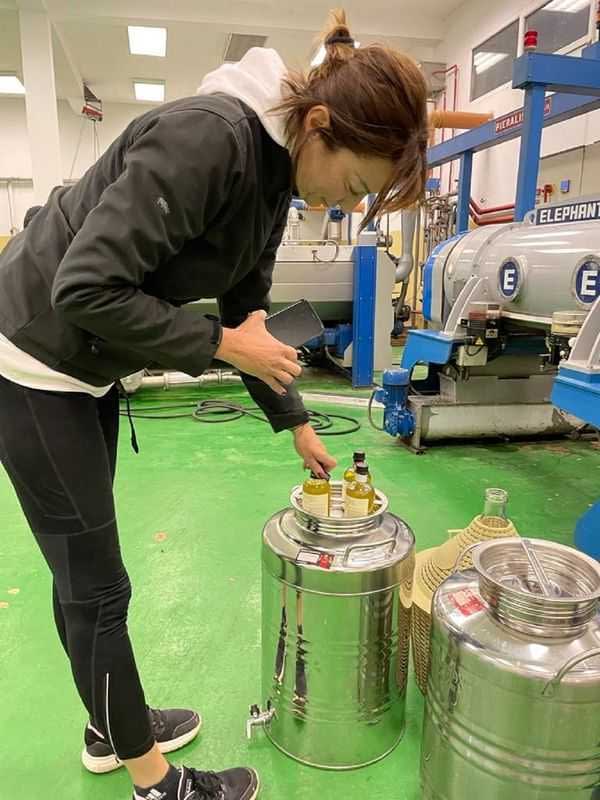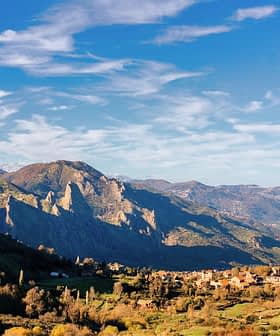The enterprising Croatian couple Martina Radovčić and Marko Murtić were the first in Dalmatia to pick and process their olives this year.
Owner Mate Ivas opened the doors of his mill in Pakoštane on the afternoon of October 1.
I do not see the purpose of offering tourists varieties that are not local.
“The olives were still green, but all healthy without any punctures or damage,” said Ivas, who also provides transportation services to the olive growers.
Every evening during the six-day harvest, he came to Radovčić’s and Murtić’s olive grove with his truck, picked up the boxes with the harvested olives and processed them immediately.
See Also:Producer Profiles“We harvest by hand in nets, without any machine harvesters, so the fruits in the mill look perfect,” Radovčić said. “They don’t have the damage that the fruits get if they are harvested with machine harvesters, falling to the ground from great heights and being damaged and oxidized.”
The harvest takes place in a cheerful atmosphere as relatives and friends participate along with the owners of the grove. They talk to each other, joke and even sing, but everyone individually wants to achieve the best possible result – harvesting as many olives as possible.
“In six days, we harvested about 3.5 tons of fruit and got 420 liters of oil,” Murtić said. Solid for this year’s turbulent olive season.
Climatological disasters decimated the olive crop along the entire Adriatic coast from Savudrija in Istria to Prevlaka in the extreme south of Dalmatia.
It was as if the climate clock had been disturbed; warm weather came in the winter and freezing temperatures in spring. During the cold front in early April, nighttime temperatures dropped to – 9 ºC, damaging the buds in the valleys and olive groves at lower altitudes.
The entire summer also passed without rain. The dry heat desiccated the soil and the olive tree canopies. Unfortunately, the heat arrived suddenly, during the most delicate phase of the vegetation – flowering and fertilization.
From the few fruits that made it through both the extreme cold and hot, many were “keeled” and fell off. A local olive pest, known as a borer, also appeared in the groves.
As a result, the Croatian olive harvest is estimated to be two-thirds lower than expected. There will be no harvest at all in some olive groves.
Unlike many of their colleagues, Radovčić and Murtić were spared from the worst of the climatic hardship.
Their olive grove is located between Vodice and Pirovac, along the Adriatic coastline and about 80 meters above sea level on terraced terrain.
There was no significant damage from the cold front. The two farmers promptly implemented all necessary agrotechnical measures, ultimately managing to protect the olives from drought, disease, and pests.
“The drought was strong, so we foliar-fed [providing water and nutrients to the tree through its leaves] the olives every 15 days or so,” Radovčić and Murtić said. “We did not irrigate… and over time they shed more and more germinated fruits.”

Murtić adds: “We protected the olive seedling by foliar spraying Oleafill with the addition of Boron, and then with Bio-algen based on seaweed.”
As usual, the two farmers carried out minimal interventions to protect the trees from diseases and pests.
“We only spray once against the olive moth,” he said. “This year, there was no need to spray against the olive fly, the biggest pest, because it does not like high summer temperatures, and there were no rainy days in September when it attacks the fruits.”
When heavy rains followed in October, there were no more fruits in Radovčić’s and Murtić’s olive grove. They were harvested and processed on time, and the oil is stored in stainless steel containers at an ideal temperature.
“Olive growing is another job for Murtić and me, but also a great passion,” Radovčić said. “He is an architect in Zagreb, and I live and work in Split as a logistics project manager involved in shipbuilding projects.”
She says that her love for Dalmatia played a part in deciding to start olive growing.
“We always knew that we would create something together in Dalmatia,” Radovčić said. Eight years ago, the couple bought 3.5 hectares of land planted with olive trees.
“We have 160 trees aged 30 to 70 years old, all of which are in full bloom,” she said. The vast majority of the trees are Oblica, a native variety mixed with a few pollinators.
“The buyers of our oil are mostly foreign tourists,” Radovčić added. “I do not see the purpose of offering tourists varieties that are not local. Tourists have come here and will pay as much as they need, for a local product, for a local specialty.”
“Just as in Istria or Italy, I do not expect to be offered Dalmatian wine and Dalmatian oil, so we believe that in Dalmatia guests should be offered only original, indigenous products from this area,” Radovčić added.
Oblica is still the most represented variety in Dalmatian olive groves, with more than 2,000 years of cultivation in the region. However, local olive growers have recently abandoned or re-grafted it with Leccino, Pendolino, Coratina and other Italian or even Spanish varieties.
Oblica olives tolerate cold, gusts of wind and drought well. The variety is also less impacted by the natural, alternate-bearing harvest of many other olive varieties and is less susceptible to peacock eye disease.

Oblica olives also thrive well on poorer and more shallow soils such as in Radovčić’s and Murtić’s olive grove and similar in the areas on the Dalmatian islands and coast.
Apart from Croatia, the Oblica olives are also grown in neighboring Montenegro, Bosnia and Herzegovina and Slovenia. The variety also thrives in California, where it arrived with Croatian immigrants. By 1908, Oblica olives had even made it to Japan, crossing the Pacific Ocean from California.
Radovčić and Murtić bought their olive grove in Vrstovica eight years ago. The land was the perfect spot for them to rest and meditate, but they were also enthusiastic about the olive trees.
They decided to work on a new venture harvesting Oblica olives. Using modern techniques, they started to produce boutique extra virgin olive oil.
They created a brand of olive oil simply called NU, for which the couple earned a Silver Award at the 2021 NYIOOC World Olive Oil Competition.
Radovčić and Murtić said that they chose the name NU because it is short, memorable and ambiguous.
With the harvest completed and the oil safely stored away, the couple plan to submit their Oblica once again to the upcoming edition of the NYIOOC.
“We are expecting Gold,” Radovčić and Murtić said. “To be among the best at the most prestigious world competition is our goal and great desire.”
Murtić added: “Judging by the appearance of the fruit and the taste of the first oil, I think it will be realized.”
This pair stores their NU oil in stainless steel barrels in controlled conditions until they receive an order from their partners. Only then are is the oil bottled and sent for sale.
This way is more expensive and challenging, but the couple insists that is necessary.
“The lifespan of our product on the shelf is short because we have transparent glass packaging,” Radovčić said.

Martina Radovčić
Unlike most others who keep the oil in dark bottles, their bottles clearly show its contents. The transparent glass bottles are also relatively small, similar to those from old pharmacies, which keep the taste and fresh smell intact for as long as possible after opening.
The couple likes the homage to the old pharmaceutical bottles because they believe that olive oil is a natural remedy to many illnesses.
To help protect their olive oil from the damage caused by heat and light, they do not allow their partners and distributors to keep the oil in their warehouses in uncontrolled conditions.
They also send their clients small quantities that are sold within a month. This way, the olive oil retains its quality for as long as possible in the stainless steel barrelsand reaches the customer in the shortest possible time.
Radovčić and Murtić describe their product as boutique because it is available in limited quantities. They produce as many bottles as they can fill and do not expand sales according to demand.
Tourists are among their target consumer base, so the oil is packed in smaller bottles – 250 milliliters – allowing foreign visitors to bring the oils back on flights.
Currently, the couple sells three different olive oil products: an unfiltered extra virgin olive oil, a filtered one and an extra virgin olive oil infused with chili.
“We plan to expand the range of products to two or three more types of oil,” Radovčić and Murtić said.
In the coming years, they intend to build a small processing center, a facility within the olive grove where they will develop a series of flavored oils using the various aromatic plants that grow naturally alongside the olive trees.
“Of course, we would like to build a picnic area and a tasting room next to the facility so that we can receive guests to taste the oil in our beautiful olive grove, which is a real oasis for relaxation and enjoyment of nature,” Radovčić and Murtić said.
“In addition, we plan to plant more olive trees because two-thirds of our land is still uncultivated,” they added. “Apart from Oblica, we are also interested in other Dalmatian varieties such as Levantinka or Drobnica.”
Eventually, Radovčić and Murtić would like to expand and begin exporting their olive oils. First, however, they believe the sector needs government support to do so.
“One could make a living from olive oil if the state would help place it outside Croatia,” the couple said. “Due to the slightly higher price of the product, our market is in the rest of the world, not in Croatia.”
“For now, we sell very well to tourists who come to Croatia, but everyone asks why this oil cannot be obtained in their home countries,” they added. “When you ask state institutions for help, neither embassies nor the Ministry of Foreign Affairs nor the Croatian Chamber of Commerce have the right strategy and plan on how to best place Croatian delicatessen products in the world.”
“It’s sad,” the two concluded. “Neighboring Italy has been doing this very well for decades for all its food industry producers.”









